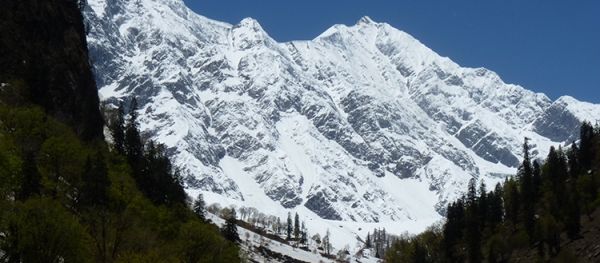The impacts of global warming are felt especially in mountainous regions, where the rise in temperatures is above average, affecting both glacierized landscapes and water resources. The repercussions of these changes are manifold and varied, from retreating glaciers to an increase in the frequency and intensity of snow avalanches. A team of researchers from the University of Geneva (UNIGE), Switzerland, has employed dendrochronology– the reconstruction of past disasters as recorded in growth series of trees– to disentangle the role of global warming in the triggering avalanches. The results of this study are published in the Proceedings of the National Academic of Science – PNAS.
Avalanches are a natural phenomenon and occur repeatedly in mountain areas; nonetheless, rising temperatures are altering their triggering. This can lead to disasters and serious consequences in mountain areas where they can severely affect the socio-economic development and the destruction of traffic infrastructure, and buildings. This is the case in the Indian state of Himachal Pradesh, where increasing residential numbers and tourism are exerting pressure on land use. Along the road to Leh, 500 km north of New Delhi, the Indian government has started to drill one of the largest tunnels of the Indian sub-continent. With the ongoing climate warming, the access road to the tunnel is becoming increasingly threatened by snow avalanches. This is why UNIGE researchers conducted their fieldwork at the spot from 2013 to 2015, in a valley located at between 3,000 and 4,000 m.
Trees: silent witnesses to the upsurge in the number of avalanches
The aim of the research group was to evaluate – and add to – the information currently available about avalanches with two goals: i. to identify the nature of the changes in avalanche activity currently taking place; and ii. to assess future needs for tackling these changes. In the absence of data comparable to the information collected in European surveys, for which records often exist for the past few centuries, the UNIGE researchers focused on trees: they examined stumps (when the tree had been removed) or cored trees that were still standing to reconstruct past snow avalanches at the study site. The scientists were able to date individual events by analysing the growth rings and wounds left on the trees by avalanches. The research included nearly 150 trees. «Since we knew the position of each affected tree, we were able to reconstruct the dynamics, lateral extent and runout distance of every avalanche,» explains Juan Antonio Ballesteros-Cánovas, a senior lecturer at UNIGE’s Institute for Environmental Sciences (ISE).
Read more at Université de Genève
Image: General view of the snow avalanche slopes at Dhundi, Himachal Pradesh, India. (Juan Antonio Ballesteros-Cánovas / UNIGE)


